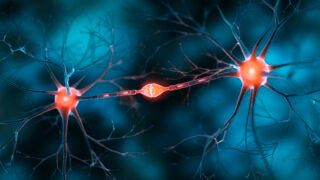The Secret Life of Bacteria
Get to know the tiny beings that live all around us—and how USC researchers are understanding and harnessing their powers.
Most species on earth are invisible to the human eye—but this hasn’t stopped USC researchers from seeing their significance.
Among the first forms of life to emerge on Earth more than 3.5 billion years ago, bacteria can live inside rocks, in subzero climates or without oxygen, and eat unappetizing dishes such as metal, sulfur or arsenic. They define the limits of where life is possible, from the depths of Earth’s oceans to the seemingly barren soil of Mars or other planets.
These colorful microorganisms form a biomass that far exceeds that of plants and animals combined. Even in our own bodies, there are more bacteria than human cells, including beneficial species that boost immunity, make vitamins, ferment indigestible carbohydrates and convert sugar to lactic acid. Other species are pathogens that cause diseases ranging from tuberculosis to leprosy.
With their unique abilities, bacteria have become an important tool for how we live. We use them to treat sewage; break down oil spills; produce wine, cheese, pickles and soy sauce; create medicines and more. At USC, researchers are pushing the possibilities of what bacteria can do and teach us. Here are a few of the big ideas inspired by these Lilliputian life forms
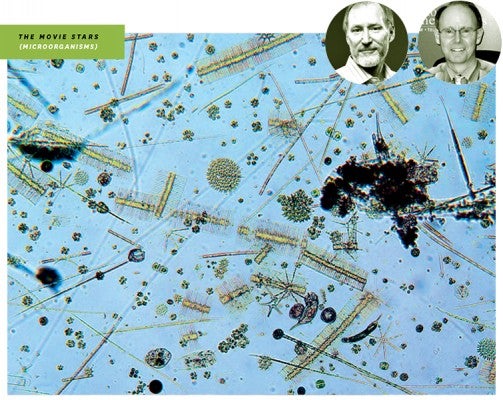
The Movie Stars (MicroOrganisms)
Claim to fame:
The April grand opening celebration of the Exploratorium museum in San Francisco featured bacteria and microorganisms projected on a grand scale, covering and interacting with the façade of the building. These diminutive divas also star in the ultra-high-resolution or “4K” short films In the Pond and MicroOrganisms.
The big picture:
Richard Weinberg of the USC School of Cinematic Arts pioneered digital cinema microscopy, bringing moviemaking into the world unseen by the naked eye. He’s been honored for developing technology that streamed ultra-high-resolution microscopy live from USC to Toyko, and he’s collaborated with USC biologist David Caron, who provided the marine life featured in MicroOrganisms.
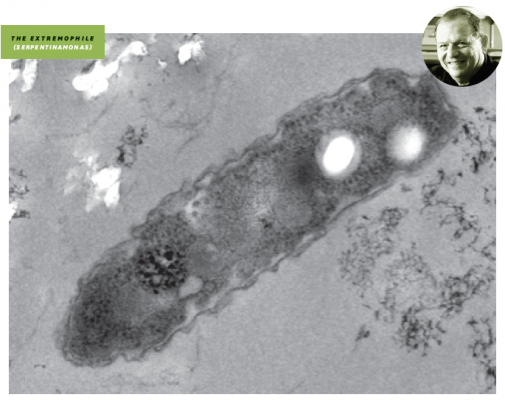
The Extremophile (Serpentinamonas)
Claim to fame:
Serpentinamonas uses explosive hydrogen gas as an energy source. Three Serpentinamonas strains were recently discovered in inhospitable, highly alkaline ponds in The Cedars, California, by the laboratory of Kenneth Nealson, Wrigley Chair in Environmental Studies at the USC Dornsife College of Letters, Arts and Sciences.
The big picture:
Serpentinamonas offers a window into how life might have looked on the early Earth, when hot mantle rock frequently raised the pH of ocean water to alkaline extremes.
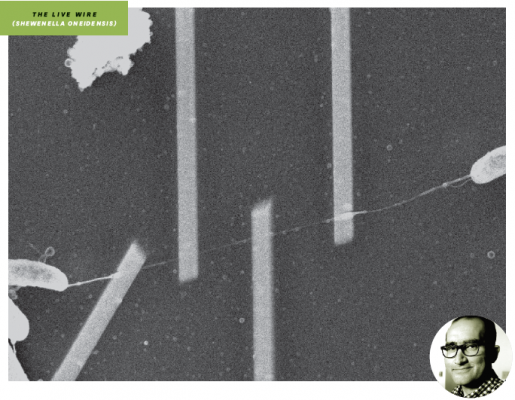
The Live Wire (Shewenella Oneidensis)
Claim to fame:
Another species discovered by the Nealson laboratory, Shewenella oneidensis, can “breathe rocks”—using iron or manganese oxides as a substitute for oxygen in respiration, and dissolving the minerals in the process. The bacteria also possess conductive “nanowires” similar to tiny nerves.
The big picture:
Nealson is studying S. oneidensis to create a living “bacterial battery” together with USC Dornsife physicist Moh El-Naggar. Bacteria-powered batteries could offer one answer to the energy crisis—producing electricity to light houses or fuel for cars. S. oneidensis also holds clues to new methods of bioremediating wastewater and combating corrosion.
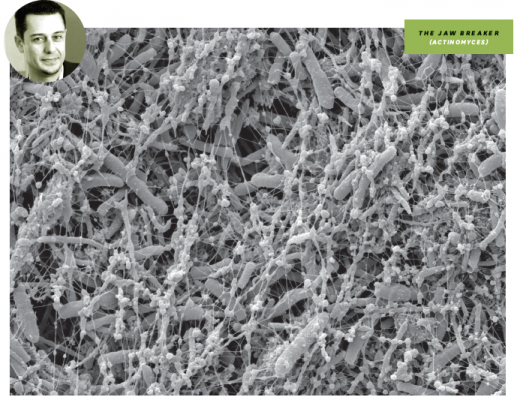
The Jaw Breaker (Actinomyces)
Claim to fame:
This slimy bacterial community or “biofilm” of Actinomyces and other species lives in the human mouth. Its bacterial residents work together as a colony.
The big picture:
Oral biofilms contain networks of bacterial nanowires, according to research by a team including El-Naggar and Parish Sedghizadeh, assistant professor at the Herman Ostrow School of Dentistry of USC. Bacteria might use these wires to communicate with each other. Biofilms can infect the jawbone and lead to bone death, so the USC team’s discovery could be the first to link nanowires to human disease. Disrupting these networks could make resilient biofilms easier to kill.
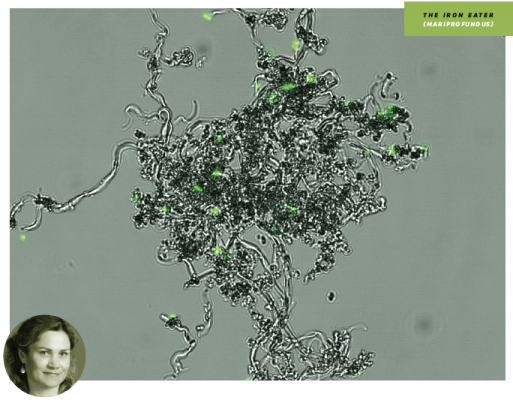
The Iron Eater (Mariprofundus)
Claim to fame:
Mariprofundus gets its energy by rusting iron-rich rocks near Hawaii’s L?’ihi Seamount and other volcanic and hydrothermal environments deep in the ocean.
The big picture:
Mariprofundus not only alters the shape of mineral formations on the ocean floor but also affects the function of ecosystems, according to research by Katrina Edwards, professor of earth sciences and biological sciences at USC Dornsife. The health of plants, fish and other sea creatures that need iron depends on the whims of this small but mighty bacterium.
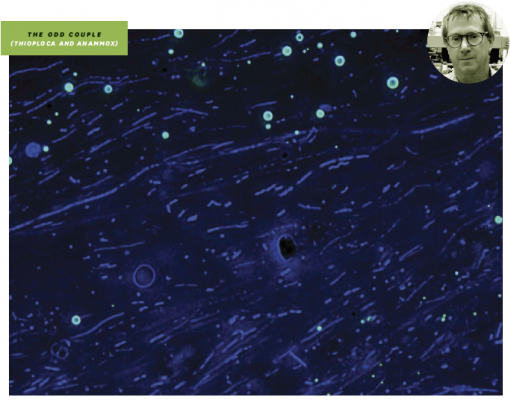
The Odd Couple (Thioploca and Anammox)
Claim to fame:
William Berelson, chair of USC Dornsife’s Department of Earth Sciences, and colleagues discovered an unusual partnership between underwater bacteria Thioploca and Anammox. Thioploca forms long chains that tiny Anammox cells ride like an elevator into the marine sediment. Then, happily ensconced in the mud, Anammox consumes Thioploca’s waste: biologically available or “fixed” nitrogen.
The big picture:
The symbiosis between Thioploca and Anammox changes the chemistry of the ocean by locking up fixed nitrogen. Algae and other sea plants need nitrogen to grow, and nitrogen then makes its way up the food chain, reaching organisms from sponges to spearfish.
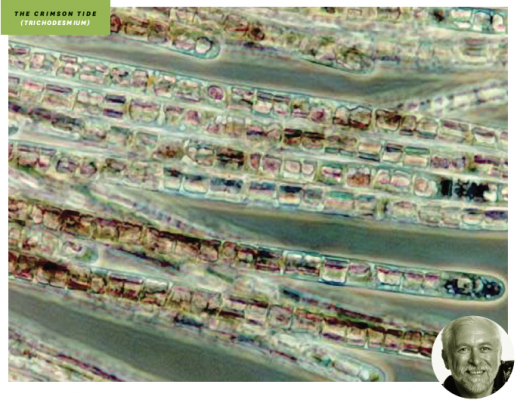
The Crimson Tide (Trichodesmium)
Claim to fame:
With a knack for using nitrogen gas to fuel its photosynthesis-based growth, Trichodesmium can thrive in nutrient-poor surface waters in the tropics. Visible from space, its massive blooms earned it the nickname “sea sawdust” and give the Red Sea its signature hue.
The big picture:
Douglas Capone, chair of USC Dornsife’s Department of Biological Sciences, studies how Trichodesmium fertilizes the ocean by converting nitrogen gas into the fixed form used by other organisms.
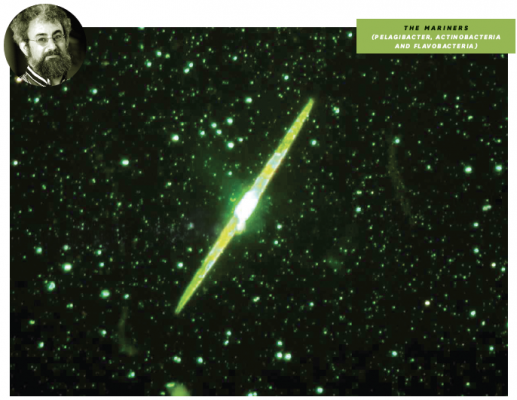
The Mariners (Pelagibacter, Actinobacteria and Flavobacteria)
Claim to fame:
In a single teaspoon of seawater, there are at least 5 million bacteria—including Pelagibacter, Actinobacteria, Flavobacteria, various photosynthetic bacteria, the odd pathogen and many others.
The big picture:
Marine bacterial communities keep the water clean by decomposing organic matter, reduce greenhouse gases through photosynthesis and even degrade oil. Biologist Jed Fuhrman of USC Dornsife studies the unique roles and responsibilities of these bacteria in the local ocean ecosystem.
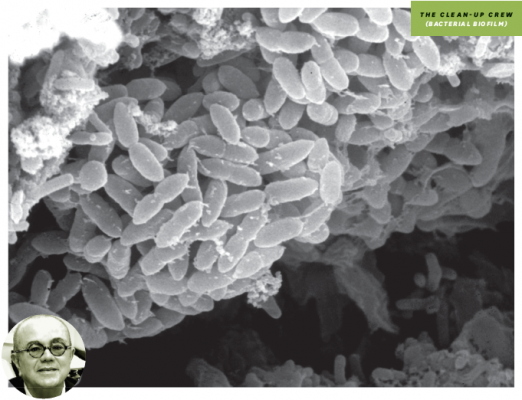
The Clean-Up Crew (Bacterial Biofilm)
Claim to fame:
This biofilm of bacteria including Escherichia coli likes to lunch on toxic pesticides such as alachlor.
The big picture:
Environmental engineer Massoud “Mike” Pirbazari of the USC Viterbi School of Engineering is exploring how biofilms can clean up the toxic wastewater produced by manufacturing pharmaceuticals, plastics and other industrial products. The trick is to spend days or weeks gradually acclimatizing bacteria to accept the nasty nibbles as a food source. As increasingly hearty servings of chemicals are dished out, the bacteria that survive alter their digestive enzymes to suit their new diet.
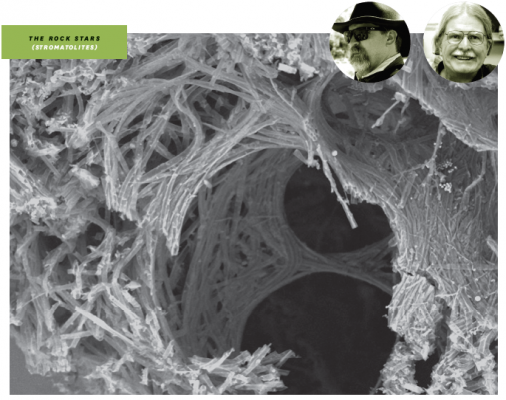
The Rock Stars (Stromatolites)
Claim to fame:
Bacteria rarely fossilize, but they do leave signatures in the rock record. Throughout the ages, communities of photosynthetic bacteria have formed thick microbial mats that cause sediments to deposit in telltale configurations called domed stromatolites and wrinkle structures.
The big picture:
Earth scientists Frank Corsetti, left, and David Bottjer interpret what stromatolites and wrinkle structures say about the history of life on Earth and other planets. Abundant on Earth during the Precambrian era and mass extinctions, and still present in environments such as Yellowstone National Park, the structures could be a biosignature—or sign of life—if found on Mars.
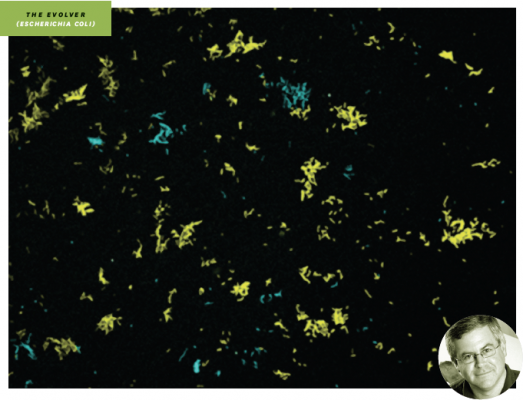
The Evolver (Escherichia Coli)
Claim to fame:
Because Escherichia coli cells spawn a new generation every 20 minutes, populations can undergo significant evolution in just two weeks.
The big picture:
USC Dornsife biologist Steven Finkel has genetically engineered E. coli to fluoresce, allowing him to see how bacterial parents differ from their “evolved” offspring. Subjected to pressures such as food shortages or high salinity, bacteria adapt to like new foods or tolerate a tough environment. By better understanding how bacteria evolve, scientists can harness their power to do everything from cleaning up oil spills to producing drugs, laundry detergent or dairy substitutes.



